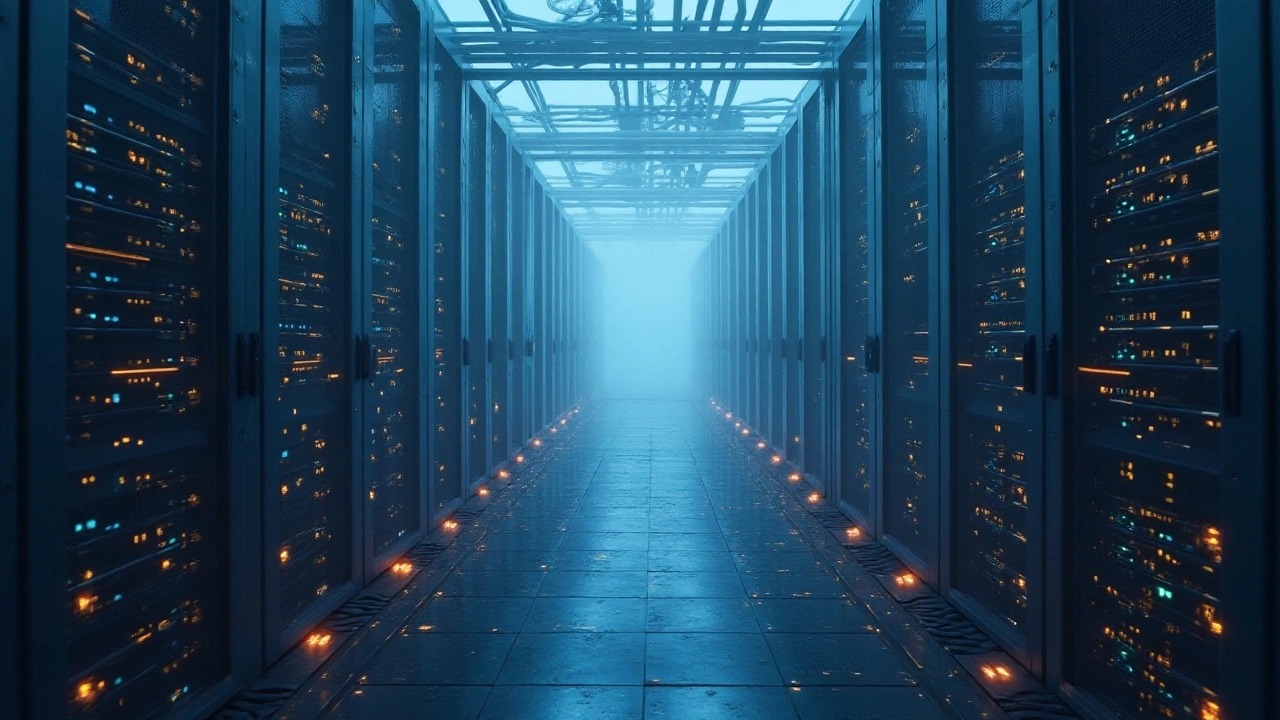Tier 4 Data Center Explained in Plain English
When you hear "Tier 4 data center," think of the most reliable place you can store servers, apps, and data. It’s the top level in the Uptime Institute’s rating system, promising 99.995% availability. That sounds like a lot of numbers, but it really means the facility can stay up almost all the time – even if power or cooling fails.
So why does this matter to you? If your business relies on online services – e‑commerce, cloud apps, or critical internal tools – any downtime can cost money and damage reputation. A Tier 4 design reduces that risk by building in multiple layers of backup for everything: power, cooling, fire suppression, and even the building’s structure.
Key Features That Make Tier 4 Stand Out
1. Redundant Power – Two independent power feeds, each with its own UPS and diesel generators. If one line goes down, the other takes over without a hiccup.
2. Redundant Cooling – Separate chillers and cooling loops keep temperatures stable. Even if a chiller fails, the other continues to work.
3. Fault‑Tolerant Architecture – All critical components are duplicated and isolated. A failure in one aisle won’t affect the others.
4. Continuous Monitoring – Sensors track temperature, humidity, power quality, and security 24/7. Alerts trigger automatic corrective actions before a problem spreads.
5. Carrier‑Neutral – Multiple internet providers can hook into the facility, giving you flexibility to choose the best network routes and avoid single‑point failures.
When Should You Go for Tier 4?
If you run a startup that can live with occasional downtime, a Tier 3 or even Tier 2 site may be enough and cheaper. But if you operate a bank, health‑care platform, or a global e‑commerce site, the cost of an outage can easily outweigh the higher price of a Tier 4 contract.
Ask yourself these questions:
- Do my customers expect 24/7 service?
- Can I afford a few minutes of downtime?
- Am I handling sensitive data that needs extra protection?
- Do I need multiple network carriers for redundancy?
If you answered “yes” to most of them, Tier 4 is worth serious consideration.
Another practical tip: when touring a data center, look for visible signs of redundancy – double UPS cabinets, separate generator rooms, and multiple cooling plants. Ask the provider for their Uptime Institute certification and check the latest audit reports.
Keep in mind that Tier 4 doesn’t guarantee zero downtime, but it pushes the odds of a failure far below what most businesses face. The extra cost usually shows up as higher monthly rates, longer contract terms, and more stringent access policies.
In short, Tier 4 data centers are built for the toughest uptime demands. They layer power, cooling, and networking so that a single point of failure can’t bring you down. If your business can’t afford interruptions, investing in a Tier 4 facility is a smart move – it protects revenue, reputation, and peace of mind.
Data centers are classified into four tiers, from Tier 1 to Tier 4, each offering different levels of redundancy, cooling, and connectivity to meet various business needs. Tier 1 represents the most basic level with limited redundancy, while Tier 4 offers the highest level of reliability and fault tolerance. Understanding these tiers is crucial for businesses to choose a data center that aligns with their operational expectations and budget requirements. This article explores the key characteristics and benefits of each tier, providing insights to help make informed decisions.
Dec, 31 2024
